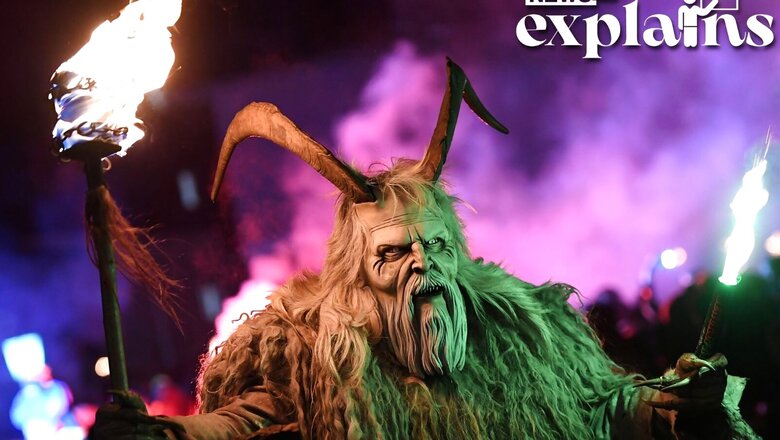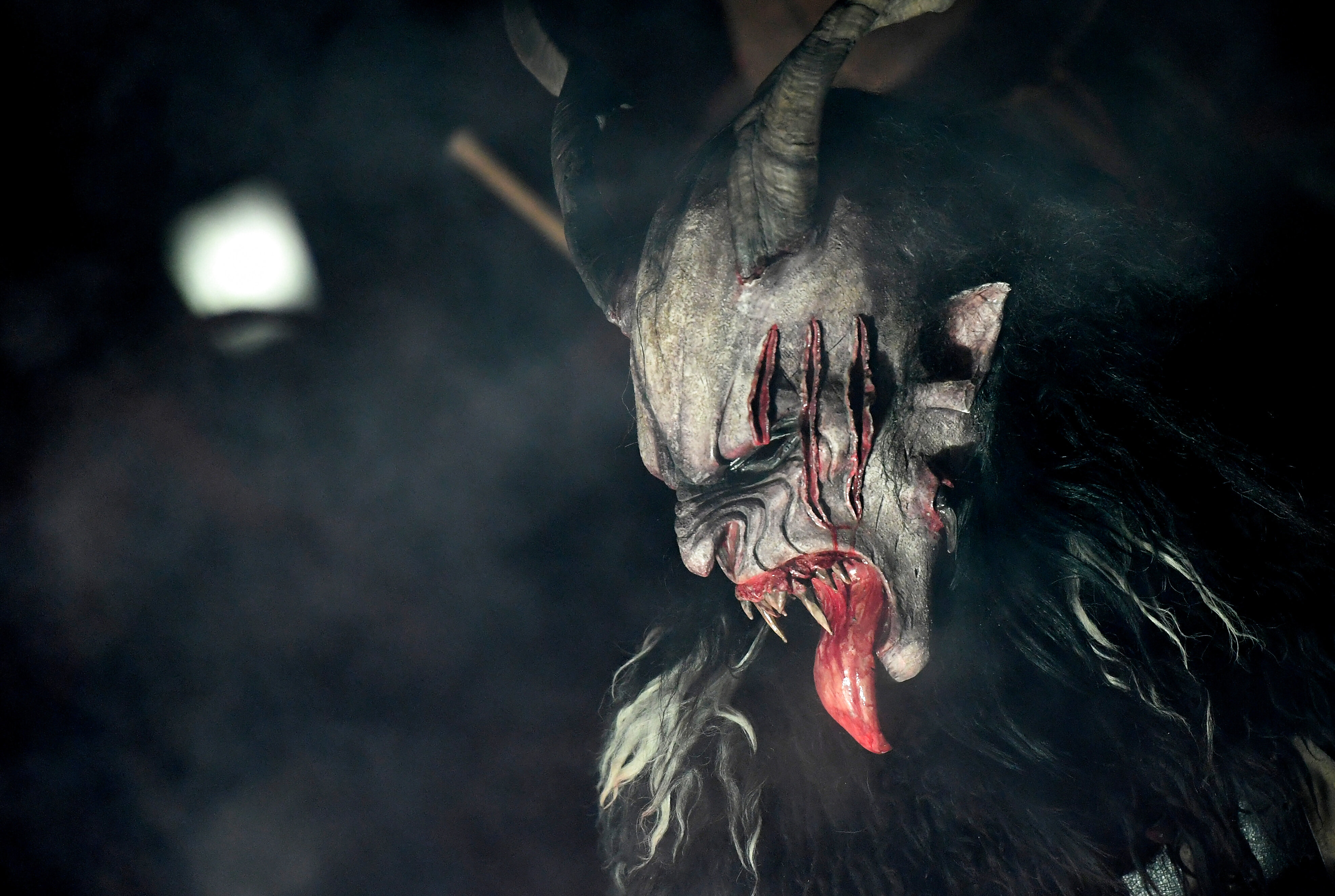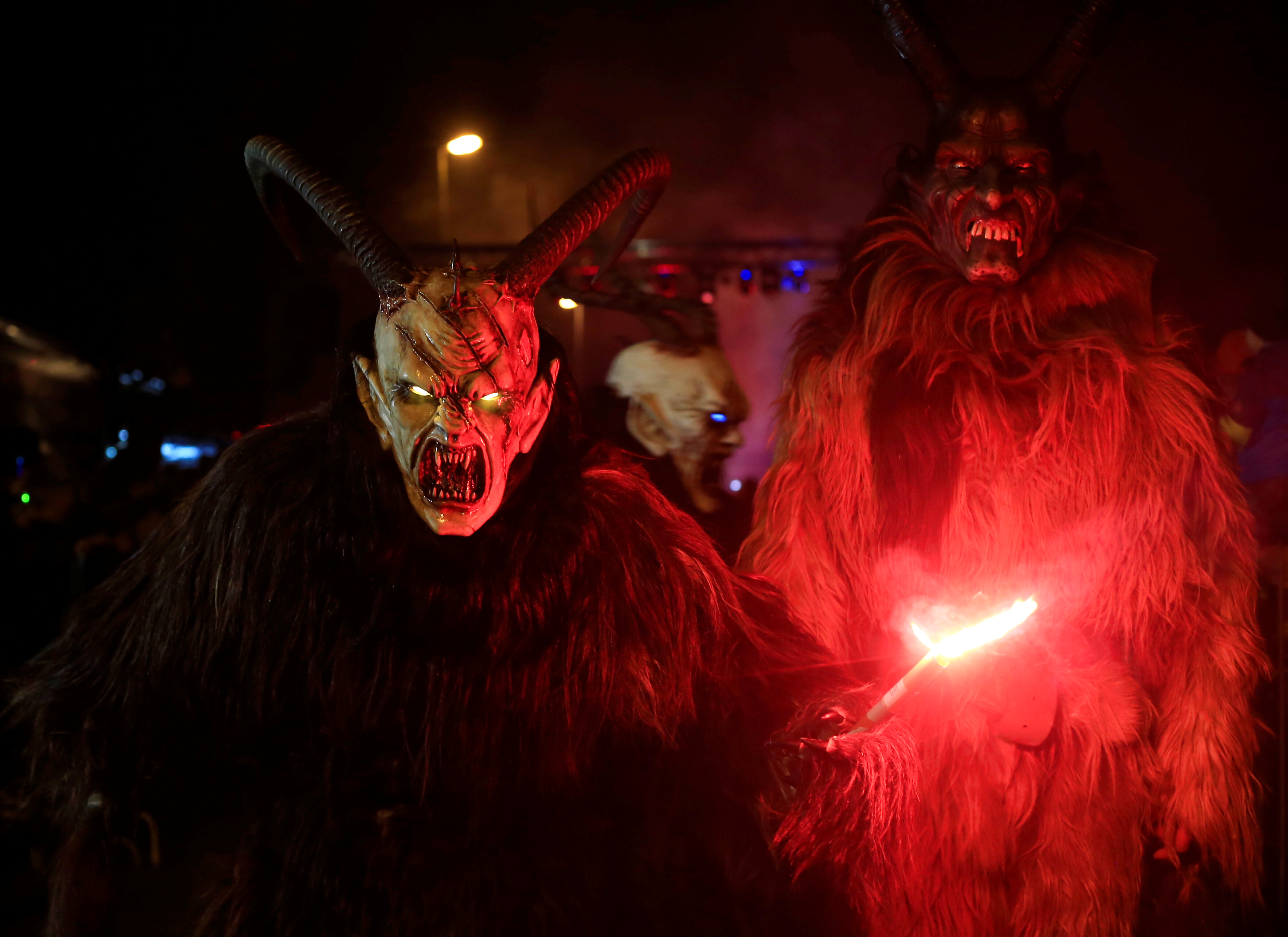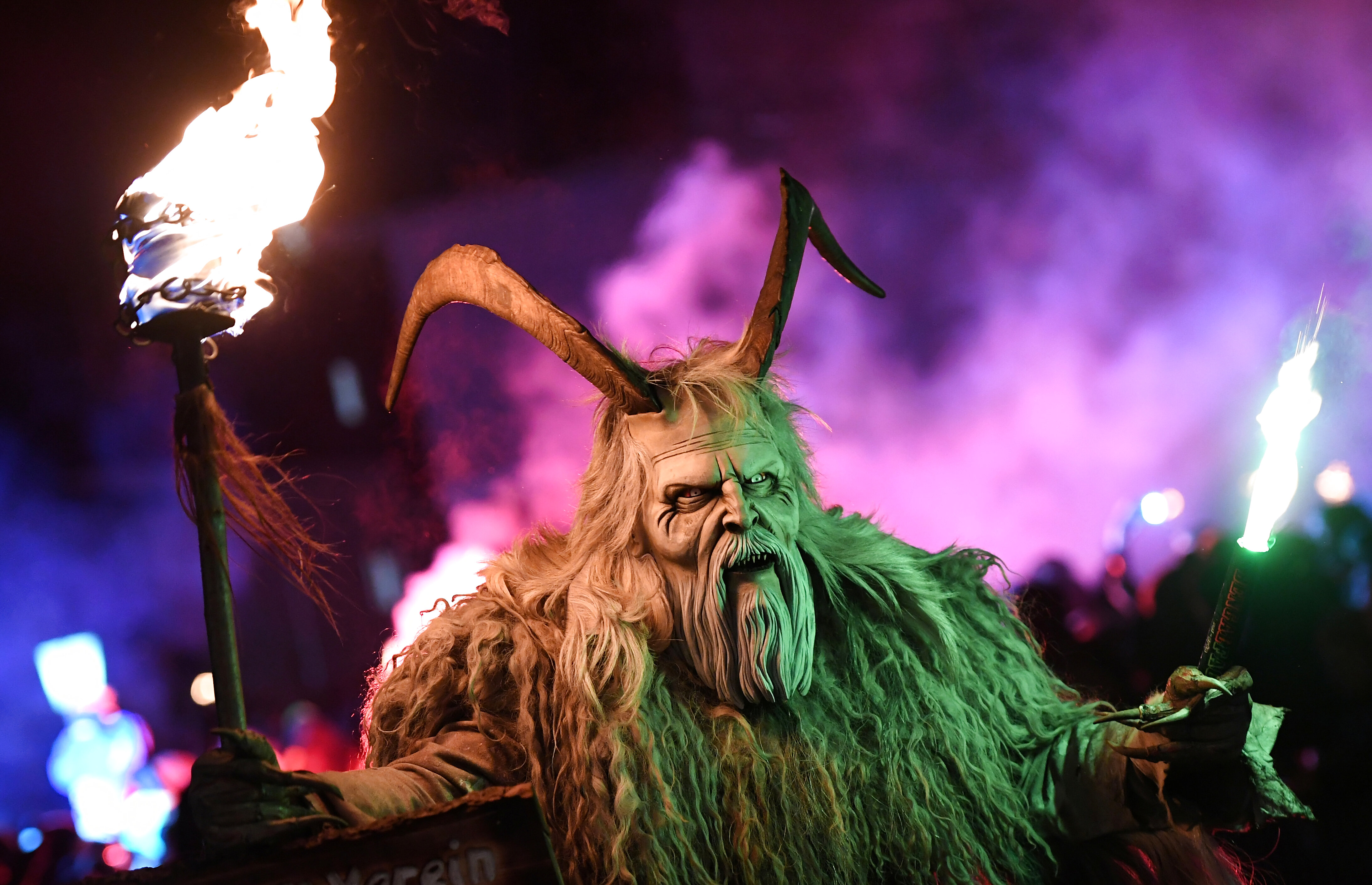
views
Is Christmas too sweet for you? The jolly red Santa Claus, holiday cheer and sweets all over. If you prefer something more…scary, then don’t worry. Christmas lore has something for you.
Here’s a different image of a Santa: A furry black body topped by a mangled, deranged face with bloodshot eyes. His horns curl up from his head, revealing his half-goat, half-demon ancestry. The creature dashes through the streets, chasing giggling children, dragging them to his lair for ‘being naughty’.
This is none other than Krampus.
While St. Nicholas is the patron saint of children in Catholicism, he is a kindly figure who helps the needy and spreads cheer. But many European cultures also feared the menacing counterparts who punished the bad amid the holiday season.

And therein come these feared Christmas beasts.
Parts of Germany and Austria fear the ferocious Krampus, while other Germanic regions fear Belsnickle and Knecht Ruprecht, two black-bearded men who beat children with switches. In France, there are Hans Trapp and Père Fouettard, explains a report by National Geographic.
Who is Krampus?
Krampus gets his name from the German word krampen, which means claw, and he is said to be Hel’s son in Norse mythology. The legendary beast also resembles other terrifying, demonic creatures from Greek mythology, such as satyrs and fauns, says the report.
In Germany, where Christmas celebrations begin in early December, the legend is part of a centuries-old Christmas tradition. Krampus was created as a counterpart to the benevolent St. Nicholas, who gave children sweets.

Krampus is said to appear in towns on the night of December 5, known as Krampusnacht, or Krampus Night, according to folklore. The following day, December 6, is Nikolaustag, or St. Nicholas Day, when children look outside their door to see if the shoe or boot they left outside the night before contains either presents (as a reward for good behaviour) or a rod (bad behavior).
In Austria, Germany, Hungary, Slovenia, and the Czech Republic, drunken men dressed as devils take over the streets for a Krampuslauf—a Krampus Run of sorts, in which people are chased through the streets by the “devils.”
What Does Krampus Do?
Krampus traditionally appears on the night of December 5, along with St. Nicholas. He and his saintly companion go house to house all night.
While St. Nick is on hand to put candy in the shoes of good children and birch twigs in the shoes of bad children, Krampus’ speciality is punishing mischievous children. Misbehaving children are beaten with birch branches or disappear, stuffed into Krampus’ sack and hauled off to his lair to be tortured or eaten, according to legend, says a report by Smithsonian.

Krampus Becomes Popular Again
The Smithsonian reports that Krampus has made a comeback in recent years, due to people looking for non-traditional ways to celebrate the holiday season.
People in the United States are embracing the dark side of Christmas by watching Krampus movies and watching special “Krampus” television episodes.
They’re throwing Krampus parties, going to local Krampusnachts (in places like Washington, D.C. and New Orleans), and participating in Krampus-themed races.
Austria, for its part, is attempting to commercialise Krampus’s harsh persona by selling chocolates, figurines, and collectible horns. There have already been complaints that Krampus has become overly commercialised and has lost his edge as a result of his newfound popularity.
What’s the Need for Krampus?
But why scare kids with a demonic, pagan creature? Perhaps it’s a way for humans to reconnect with their animalistic side. Such impulses may be about assuming “a dual personality,” António Carneiro told National Geographic magazine, on revitalised pagan traditions. The person dressed as the beast “becomes mysterious,” he explained.
Read all the Latest Explainers here




















Comments
0 comment